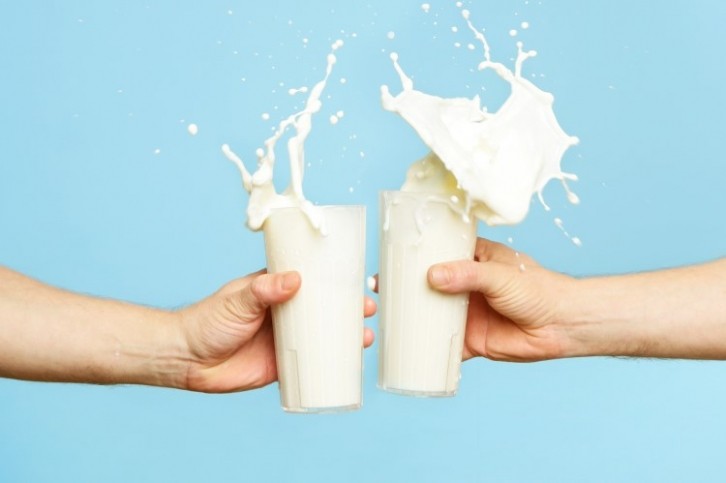Milk’s environmental impact ‘an expected trade-off’ when its nutritional value is factored in – study

Researchers from Virginia Tech's School of Animal Sciences analyzed global data to better understand the holistic role of the dairy and meat industries with regards to human nutrition and the environment.
The researchers suggested that previous studies into the global dairy industry’s environmental impact had not considered the sector’s contribution to nutrition, presenting instead its outputs in terms of milk weight or energy content only. In terms of the environment, the study highlighted that prior scientific analysis had shown that removing livestock from US agriculture would only improve agricultural GHG emissions ‘slightly’ while resulting in a decrease of essential micronutrient supplies at the same time.
“The objective of this work was to characterize the global contributions of fluid milk to human-edible nutrient supplies (especially calcium) and the environmental impacts of food production, specifically GHG emissions and water use. We hypothesized that dairy cattle produce more nutrients than they consume, on the basis of human-edible nutrient supply. We also hypothesized that milk would prove to contain a unique nutrient profile, supplying high-quality vitamins and minerals with low energy content. We expected milk production supplies in individual countries to relate strongly to environmental impacts such as GHG emissions and water use.
“It is necessary to balance the undesirable environmental impacts of livestock production with their important contributions to human nutrient supplies and sustainable farming efforts,” the paper suggested.
Analyzing FAO data
The researchers took a closer look at data collated by the United Nations and Food and Agriculture Organization that enabled them to evaluate the environmental impact of different agri products on a country-, continent-, and global levels, focusing on the impact of fluid milk.
Dairy’s environmental and nutritional contributions/impact was evaluated on a continental and global scale, with researchers analyzing data for North and South America, Europe, Africa, Asia and Oceania.
The study also explored the nutrient-to-calorie ratios of dairy milk. “We highlighted where fluid milk fell within that distribution and explored how both the distribution of all foods, and milk specifically, compared with the desired nutrient-to-calorie ratios required based on human nutrition targets,” the researchers stated.
For the environmental impact assessment, the study assessed how milk production affects the environment ‘in the context of its nutrient provision’, instead of focusing on weight or food energy, as prior studies had done.
Results
The study concluded that milk provided enough calcium and phosphorus to meet the needs of 35-40% of the human population; riboflavin and B12 to meet the needs of 50-60% of the global population, and amino acids supplies that were sufficient for 25-30% of people. Milk also contributed more than 7% of the supplies of calcium, phosphorus, riboflavin, B12, vitamin A, vitamin D and choline.
Analyzing the nutrient-to-calorie ratio of milk, the researchers found that milk was among the most concentrated sources for many essential amino acids, riboflavin, phosphorus and calcium. They also highlighted that calcium was ‘among the most inadequately consumed essential micronutrients’ and represented a ‘unique nutritional deficiency’ despite evidence that agricultural systems were estimated to supply enough of the micronutrient to meet nutritional requirements everywhere besides Africa and Asia. This is down to factors such as socioeconomic gaps and food chain disruptions regionally, and can affect high-income and low- and middle-income nations alike.
“This assessment strengthens the argument that milk should be considered a primary source of calcium and other nutrients for human consumption, because it can simultaneously (1) provide a high-concentrate source of calcium, (2) meet other important nutrient needs, and (3) not risk excess energy consumption,” the researchers concluded.
The study could not find a link between milk and water use as part of analysing existing data, but recognized that ‘it is generally accepted’ that ‘considerable water resources’ are required to produce milk, adding that ‘this use…can be seen as an expected trade-off associated with producing food’.
The study also found that meat and milk production showed to be strongly interconnected, with the researchers stating that “if milk production were decreased as a strategy to reduce GHG, global supplies of nutrients including amino acids (Lys, Val, Thr, Ile), vitamin A, vitamin B12, riboflavin, and arachidonic acid would be predicted to fall. A similar treatment of meat would result in several of the same nutrient reductions with the addition of iron and zinc.”
The study again suggested that the GHG impact of milk and meat represents a compromise, but highlighted that strategies to reduce emissions, such as through animal diet manipulation and manure management, could enhance the utility of milk and other ruminant products for human consumption.
In conclusion, the researchers commented: “Collectively, the data highlight milk as an important food within the global agroecosystem. Although there are environmental trade-offs associated with milk production globally, milk provides a critical source of important vitamins and minerals. Indeed, milk is one of the only low-energy sources of calcium available for human consumption. Despite differences in production systems globally, milk production is strongly associated with calcium supplies and with supplies of other critical nutrients such as protein, riboflavin, vitamin B12, and phosphorus. Improving global supplies of milk, along with coordinating distribution of milk among supply chains, may be important priorities for enhancing availability of these critical nutrients within food systems worldwide.”
Source:
Global contributions of milk to nutrient supplies and greenhouse gas emissions
R.R. White, C.B. Gleason
Published 29 March 2023
DOI:10.3168/jds.2022-22508








